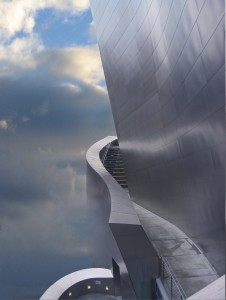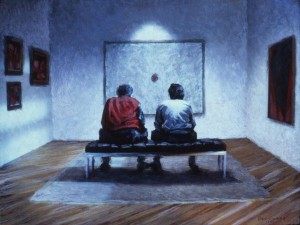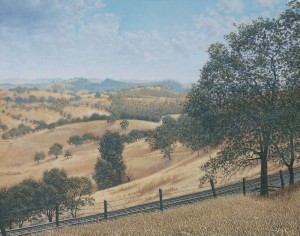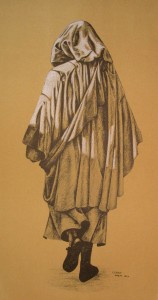Dan Curry pioneered high-volume, high-quality episodic television visual effects and, as a result, has been nominated for an Emmy 15 times and won 7 times. He is a painter whose skills have spanned canvas to digital and whose wisdom on creating the art of visual effects is as expansive as his career. We caught up with Dan as he works on a network pilot.
Dan Curry worked on the Star Trek TV series for 18 years, first as a visual effects supervisor on Star Trek: The Next Generation and then as a Visual Effects Producer on Star Trek: Deep Space Nine, Star Trek: Voyager, and Enterprise. During that time, he oversaw and pioneered a path for producing feature-film-quality effects in episodic television, a path that made today’s heroes, Battlestar Galactica, and even CSI-style shows possible.
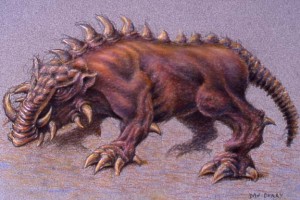
Not that Dan will allow one to give him all the credit. He repeatedly and generously points to the vast crews and teams at many of the post houses throughout Los Angeles who have worked on the various series. These include companies such as Digital Magic, CIS, Image G, and the Post Group.
It is hard to imagine today, but when Star Trek: The Next Generation started in 1987, it was effectively pre-digital. The ships were ILM models and the editing was on 1″ tape. Over time, Curry and his various teams steered the program through the transition to digital, along the way doing pioneering work in the first digital suites, completing tracking shots, and early use of Harry, Henry and Flame systems.
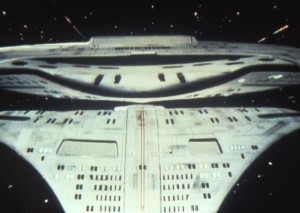
Curry saw matte painting move from glass to Photoshop. It is fair to say he is a traditional artist in all senses of the term, and he learned matte painting from the greats of the glass matte painting days. Curry worked with Albert Whitlock (The Birds, Hindinberg, Dune, Coming to America), Peter Ellenshaw (Zorro, Swiss Family Robinson, Love Bug, Dick Tracy), Matthew Yuricich (Ghost Busters, Blade Runner, Die Hard). Curry was first encouraged to become a matte painter when film editor Marsha Lucas, who was then married to George Lucas, saw his one-man exhibition of fine art and introduced him to Dennis Murren.
Whitlock, Ellenshaw and Yuricich are some of the most respected and gifted matte painters the industry has ever seen. Their work is creatively and artistically inspiring, as is/was their professionalism and pure technical skill. In this era, the paintings were not only painted to blend between live action and oils on sheets of glass, but as Dan Curry fondly remembers, these artists would at times expose their matte paintings to original negative. They would expose to film that was still unprocessed from the live-action shoot, thus double exposing the original negative (partially blacked on set) and avoiding interpose and internet generation loss.
This practice is extremely dangerous since even an incorrect exposure would mean not only was the matte painting useless but also the original live-action was lost. Curry further recounts watching in awe as some of these greats would actually paint on glass in negative, yet once the film was printed, the colours and tones of the matte painting and original photography would match perfectly. As you can hear in this week’s fxpodcast, Dan Curry himself was the 15th member of the Illustrators and Matte Artists Union IATSE Local 790.
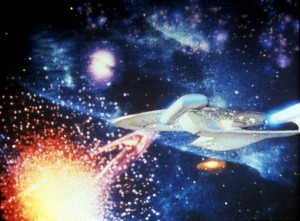
When Curry moved to Star Trek, he already had major film credits of his own (Buck Rogers, Battlestar Galactica, Cheech and Chong’s Next Movie), but he found a special place in Television. Rather than being the poor cousin of film, through Star Trek and shows such as Babylon 5 that followed it, the industry found a vast and complex research lab for techniques and approaches that would years later be adopted by feature films. Given the smaller frame size, television was the first area to see many techniques developed. Only in the last few years have films been digitally graded, where this practice was standard for decades in episodic television.
But this went far further than grading. The first computer manipulation systems could not easily process the size of film frames and the available disk storage at the time was lacking, meaning that digital effects were not cost effective to produce. Even by 1991, Terminator 2 featured only a few minutes of actual digital effects…and at the time was the most expensive movie ever made at approximately $100 million.
Yet in Star Trek, digital visual effects were required weekly. The role of episodic television at this time as a proving ground for feature film effects can not be over stated. In fact, many of the artists from the powerhouse of Trek episodic television migrated to feature film production along with the techniques. Rob Legato was one such artist who moved from Trek to feature film digital production. Curry and Legato pioneered the technique of splitting the series into two separate but equal vfx units, thereby allowing each time twice as long to work on each of their episodes and overlap production. Far from being a poor cousin, episodic effects was a critical development environment that pushed the science of visual effects forward in the late 80s and 90s.
Legato had been at Robert Abel & Associates where he served as producer, visual effects supervisor and ultimately director of visual effects oriented TV spots. After he left he served as alternating visual effects supervisor for the TV series The Twilight Zone during its second season. This series led to Star Trek: The Next Generation where Legato served as visual effects supervisor, second unit and episode director for a period of five years. He then took over as visual effects producer/supervisor for the newly created series Deep Space Nine as well as directing one of the episodes of its first season. Both Star Trek: The Next Generation and Deep Space Nine earned Legato two Emmy Awards for Visual Effects.
Legato left Deep Space Nine after its first season to join Digital Domain. He then became the visual effects supervisor, working on Interview with the Vampire, Apollo 13 (which earned him his first Academy Award nomination), and then Titanic for which he won the Oscar. When Legato left Deep Space Nine, Curry took over.
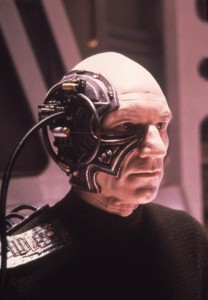
Curry also moved back to doing feature film work. He worked on several Trek features, such as Star Trek 4 and 5, but he remains committed to television. He is currently working as the visual effects supervisor on a pilot for Warner Brothers called Twilight. This love of television comes in part from the freedom he enjoys in contributing to a variety of roles in the production.
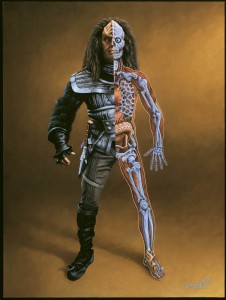
Curry not only designed and supervised effects for the Trek franchise, he also directed second unit for the shows. His contributions included also doing extensive artwork for the shows, including conceptual design, motion control photography, animation, electronic and optical compositing, matte painting, space ship design, storyboarding, and martial arts choreography. His martial arts work includes developing the Klingon martial arts form “Mok’bara” and inventing the Klingon weapons the “bat’leth” and the “mek’leth”.
Over the years, Curry brought a lot technology to Trek but also the eye of a traditional artist. Curry still paints today, and his work was the catalyist that lead to the VES book VESAGE. This book highlights the fine art and photography of members of the Visual Effects Society. Along with other key VES members such as Bill Taylor, John Knoll, and others, Curry helped bring the book to market.
Unlike his years of professional work, Curry finds the solitude of painting appealing. His work is nearly all done from memory, and it spans from the real to the hyper real and surreal. In addition to the images of some his paintings, below, his work can be viewed online at dancurrygallery.com.
